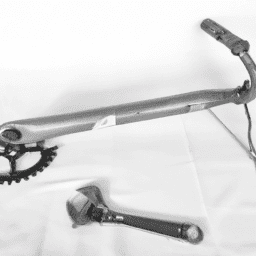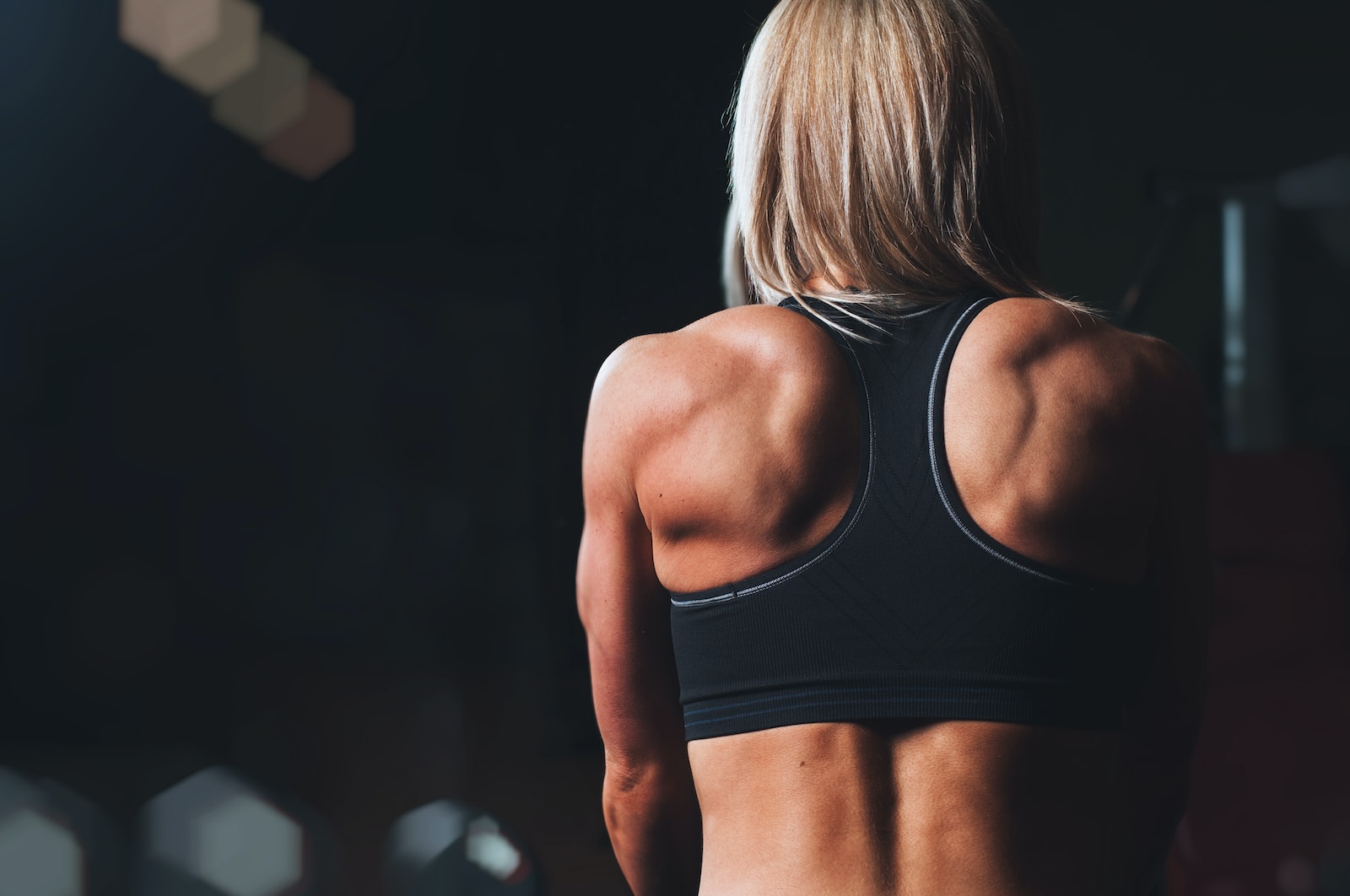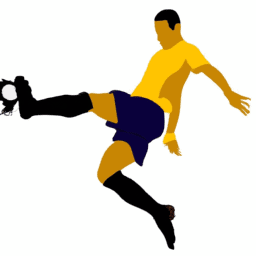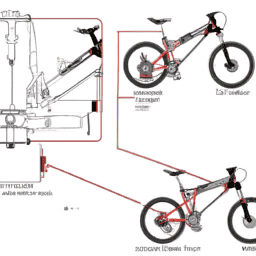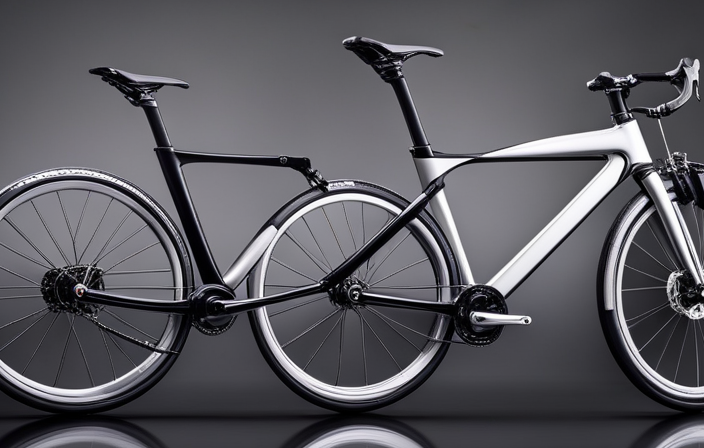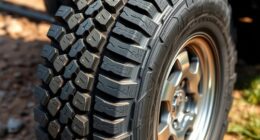Switching out a bike seat might appear to be a challenging endeavor, yet with the appropriate equipment and some basic knowledge, it turns out to be an easy and direct task. Being an enthusiastic biker, I’ve personally had to change numerous bicycle seats throughout my cycling journey.
In this article, I will guide you through the steps necessary to replace your old, worn-out seat with a new one that will provide you with comfort and support on your rides. Before we begin, it is important to gather the necessary tools and supplies.
You will need a wrench or Allen key (depending on your bike’s seat post), a new seat, and a bit of grease or lubricant. It is also helpful to have a clean rag or towel on hand to wipe down any parts of the bike that may have accumulated dirt or grime.
With these items at the ready, let’s get started on replacing that old seat and upgrading your ride!
Key Takeaways
- Proper tools and knowledge are necessary for replacing a bicycle seat.
- Choosing the correct type and size of the seat is important for comfort.
- Adjusting the height, angle, and fore/aft position of the seat ensures even weight distribution and maximum power from pedal strokes.
- Small tweaks and adjustments may be necessary for the perfect fit.
Gather Your Tools and Supplies
You’ll need to gather your tools and supplies before you can start replacing your bicycle seat, so make sure you have everything on hand to make the process go smoothly.
First, you’ll need to determine the type of bicycle seat that you have and make sure that the replacement seat fits your bike. There are several types of bicycle seats, including road bike seats, mountain bike seats, and cruiser seats. Make sure that you select the correct type of seat for your bike to ensure a comfortable and safe ride.
In addition to selecting the right seat, you’ll also need to ensure that the seat is adjusted to the proper height. The importance of proper seat height cannot be overstated – if your seat is too high or too low, you’ll experience discomfort, pain, and possibly even injury.
To adjust your seat height, you’ll need a tape measure, a level, and an Allen wrench. Once you have all of your tools and supplies ready, you can move on to removing the old seat.
Remove the Old Seat
To start, loosen the bolts attaching the saddle to the post, allowing it to be easily detached. This can be done using a wrench or an Allen key, depending on the type of bolts used.
Once the bolts are loose, lift the saddle off the post and set it aside. Common seat problems include worn out or torn padding, damage to the rails, or a seat that is no longer level.
In order to properly diagnose and fix these issues, it’s important to have the right tools on hand. You may need a screwdriver, pliers, or a socket wrench to remove the seat from the post and access the rails and padding.
With the old seat removed, it’s time to prepare the new seat for installation. (Note: In the upcoming section, we will discuss how to prepare the new seat for installation.)
Prepare the New Seat
Once the old saddle’s removed, it’s crucial to inspect the new one for any defects or damage before proceeding with installation. Choosing the right materials is important as well.
Saddles are typically made of leather, synthetic materials, or a combination of both. Leather saddles are durable and comfortable, but they require a break-in period and regular maintenance. Synthetic materials, on the other hand, are often lighter and more weather-resistant, but may not be as comfortable as leather.
Proper sizing is also essential for a comfortable ride. When selecting a new saddle, make sure to measure the distance between your sit bones to determine the appropriate width. Additionally, consider the shape of the saddle and the riding position it is designed for.
Once you have chosen the right saddle, ensure that it is securely attached to the seat post before hitting the road. With the new saddle properly prepared, it’s time to move on to the next step of installation.
Install the New Seat
Now it’s time to get that new saddle onto your ride and feel the comfort and support it provides.
First, make sure you’ve chosen the right seat for your needs. Consider the shape and size of the new seat and how it will fit your body. A wider seat may be more comfortable for some riders, while a narrow one may be better for those who are more active. Look for a seat that’s made of durable materials and has enough cushioning to provide support while you ride.
Once you’ve chosen the right seat, it’s time to install it. Start by adjusting the seat height to your desired level. Loosen the seat clamp bolt and slide the seat post up or down until it’s at the right height. Then, tighten the bolt to hold the seat in place.
Make sure the seat is level and centered before tightening the bolt completely. With the new seat installed and adjusted, you’re ready to test it out and make any final adjustments to ensure a comfortable ride.
Test the New Seat and Make Final Adjustments
After installing the new saddle, take your bike for a spin to feel the difference in comfort and support, and make any necessary adjustments to ensure a smooth ride. Here are some adjustment techniques you can use to fine-tune your saddle and make it fit your body perfectly:
-
Adjust the height of the saddle: To do this, loosen the seat post clamp and adjust the height of the saddle until your legs are almost fully extended at the bottom of the pedal stroke. This will ensure that you’re getting the most power out of your pedal strokes.
-
Adjust the angle of the saddle: The angle of the saddle can have a big impact on your comfort level. You want it to be level or slightly tilted forward, so that your weight is evenly distributed on the saddle.
-
Adjust the fore/aft position of the saddle: This is the distance between the saddle and the handlebars. You want to adjust it so that your weight is evenly distributed between your hands and your sit bones.
-
Assess your comfort level: Once you’ve made these adjustments, take your bike for a longer ride to see how it feels. If you’re experiencing any discomfort or pain, make some small adjustments until you find the perfect fit.
By following these adjustment techniques and assessing your comfort level, you’ll be able to ride your bike with more ease and confidence. Don’t be afraid to make small tweaks until you find the perfect fit for your body and riding style.
Frequently Asked Questions
How do I determine the correct size of the new seat for my bicycle?
To determine the correct size for my new bicycle seat, I will measure the distance between my sit bones. Seat material options include leather, synthetic, and gel. A comfortable and supportive seat is essential for long rides.
Can I replace my bicycle seat with a different type of seat, such as a racing or gel seat?
Choosing a different type of seat can enhance your riding experience. Racing seats offer more speed and agility, while gel seats provide extra comfort. Consider factors such as riding style and body shape when selecting a seat. Pros and cons vary depending on the individual.
How often should I replace my bicycle seat?
Factors affecting bicycle seat wear include frequency of use, weight of the rider, and the terrain. Choosing the right material for your bicycle seat, such as leather or synthetic materials, can also impact its lifespan. Replacement should occur when the seat shows signs of wear or discomfort.
Should I use any lubricants when installing the new seat?
Using lubricants when installing a new bicycle seat can help prevent potential issues such as squeaking or corrosion. However, it’s important to use the right type of lubricant and not apply too much, as it can attract dirt and debris.
How can I adjust the angle and height of my new bicycle seat to ensure proper comfort and posture?
To adjust the tilt and height of my new bicycle seat, I first loosen the seat clamp bolt and adjust the seat post. Then I tighten the bolt and test ride to find comfort and proper posture.
Conclusion
Replacing a bicycle seat may seem like a daunting task, but with the right tools and a little know-how, it can be a quick and easy process. I found that having a wrench, pliers, and a new seat were the most important items to have on hand.
After removing the old seat and preparing the new one, it was simply a matter of tightening the bolts and making any necessary adjustments.
One interesting statistic to note is that having a comfortable bicycle seat can make all the difference in enjoying your ride. In fact, a study by the National Institutes of Health found that discomfort in the saddle was a major reason why many people stopped cycling altogether.
By taking the time to properly replace a worn or uncomfortable seat, cyclists can ensure a more comfortable and enjoyable ride, ultimately leading to more time spent on their bikes. So don’t let a bad seat hold you back – with a little effort, you can easily upgrade and improve your cycling experience.
